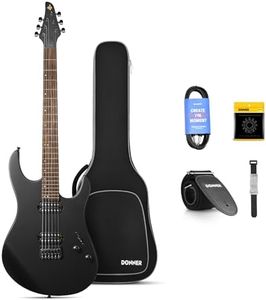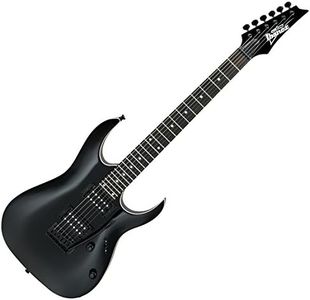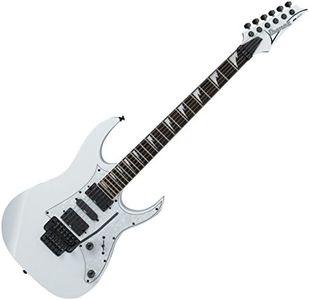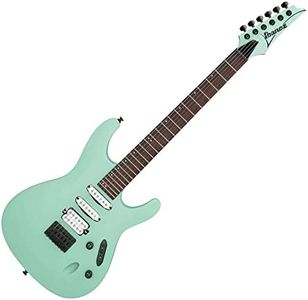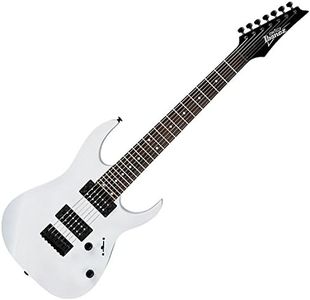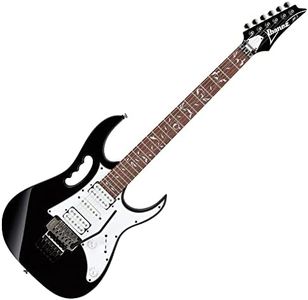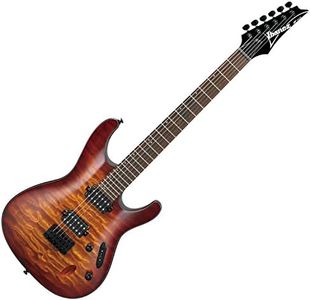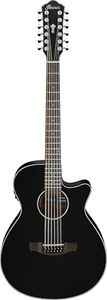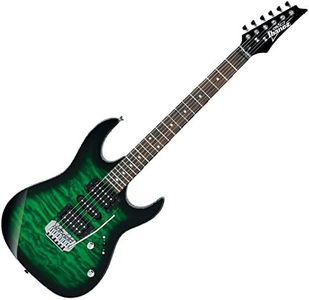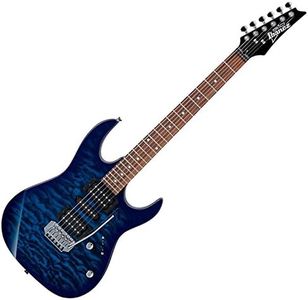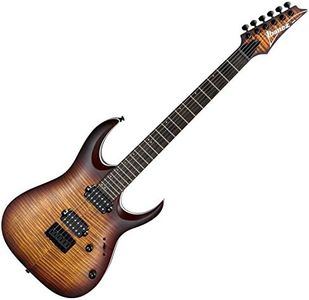We Use CookiesWe use cookies to enhance the security, performance,
functionality and for analytical and promotional activities. By continuing to browse this site you
are agreeing to our privacy policy
10 Best Ibanez Electric Guitars
From leading brands and best sellers available on the web.Buying Guide for the Best Ibanez Electric Guitars
Choosing the right electric guitar can be an exciting journey, especially with a brand like Ibanez, known for its wide range of models suited for different playing styles and skill levels. The key to finding the best fit is understanding your own needs—whether you’re a beginner, an intermediate player, or a seasoned musician, and what kind of music you want to play. By focusing on the main specifications, you can narrow down your options and select a guitar that feels comfortable, sounds great, and inspires you to play more.Body TypeThe body type of an electric guitar refers to its shape and construction, which can be solid, semi-hollow, or hollow. This is important because it affects the guitar’s weight, comfort, and the kind of sound it produces. Solid bodies are the most common and are great for rock, metal, and most modern styles due to their sustain and resistance to feedback. Semi-hollow and hollow bodies are lighter and offer a warmer, more resonant tone, making them popular for jazz, blues, and indie music. When choosing, think about the genres you want to play and how much weight you’re comfortable holding during practice or performance.
Neck Profile and Scale LengthThe neck profile describes the shape and thickness of the guitar neck, while the scale length is the distance between the nut and the bridge. These factors influence how the guitar feels in your hand and how easy it is to play. Thinner necks and shorter scale lengths are often preferred by players with smaller hands or those who like to play fast, while thicker necks and longer scales can provide a more substantial feel and tighter string tension. Try different neck shapes and lengths to see what feels most comfortable for your hand size and playing style.
PickupsPickups are the components that capture the string vibrations and turn them into an electric signal. The main types are single-coil, humbucker, and sometimes a combination of both. Single-coil pickups offer a bright, clear sound and are great for clean tones and genres like funk or pop, but they can be more prone to noise. Humbuckers provide a thicker, warmer sound with less noise, making them ideal for heavier music like rock and metal. Consider what kind of sound you prefer and what styles you want to play when choosing the pickup configuration.
Bridge TypeThe bridge is where the strings are anchored on the body of the guitar, and it can be fixed or feature a tremolo (whammy bar) system. Fixed bridges are simpler, easier to maintain, and provide stable tuning, which is great for beginners or those who don’t use a lot of pitch effects. Tremolo bridges allow you to bend notes and create vibrato effects, but they can be more complex to set up and keep in tune. If you like expressive playing and effects, a tremolo bridge might be for you; otherwise, a fixed bridge is a solid, reliable choice.
Number of FretsThe number of frets determines how many notes you can play on the guitar’s neck. Most electric guitars have 22 or 24 frets. More frets give you access to higher notes, which can be useful for soloing and certain styles of music, especially in rock and metal. If you mostly play rhythm or don’t venture high up the neck, 22 frets may be enough. Think about your playing style and whether you need those extra notes for your music.
Finish and AestheticsThe finish refers to the color and surface treatment of the guitar, which can range from natural wood to bold, flashy colors. While this doesn’t affect the sound, it’s important because it can inspire you to play and feel confident on stage. Choose a finish that matches your personality and makes you excited to pick up the guitar.
